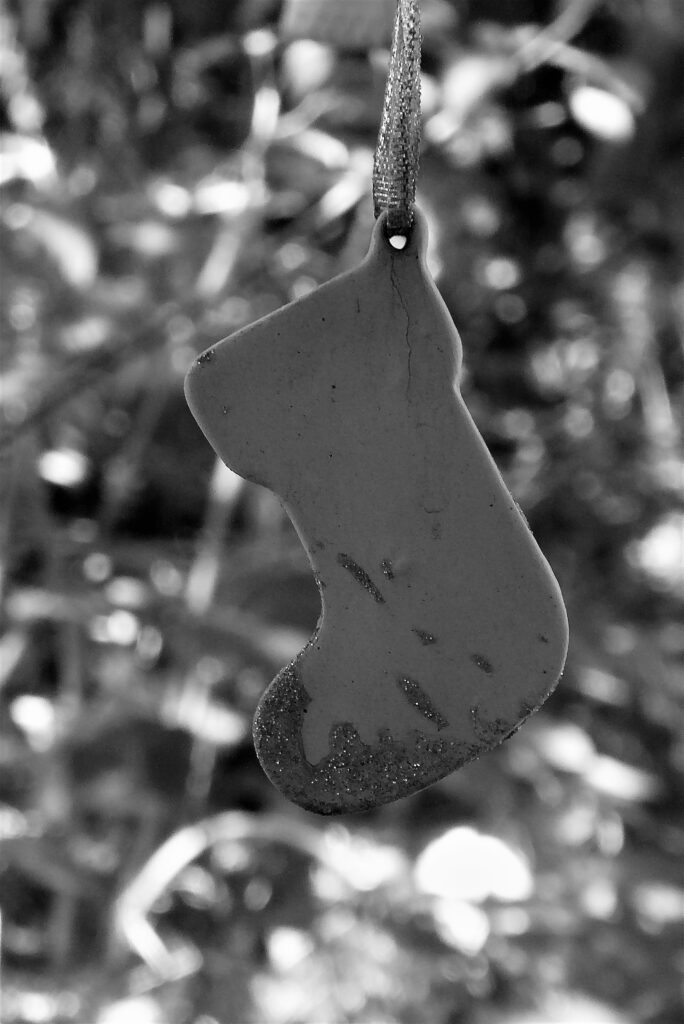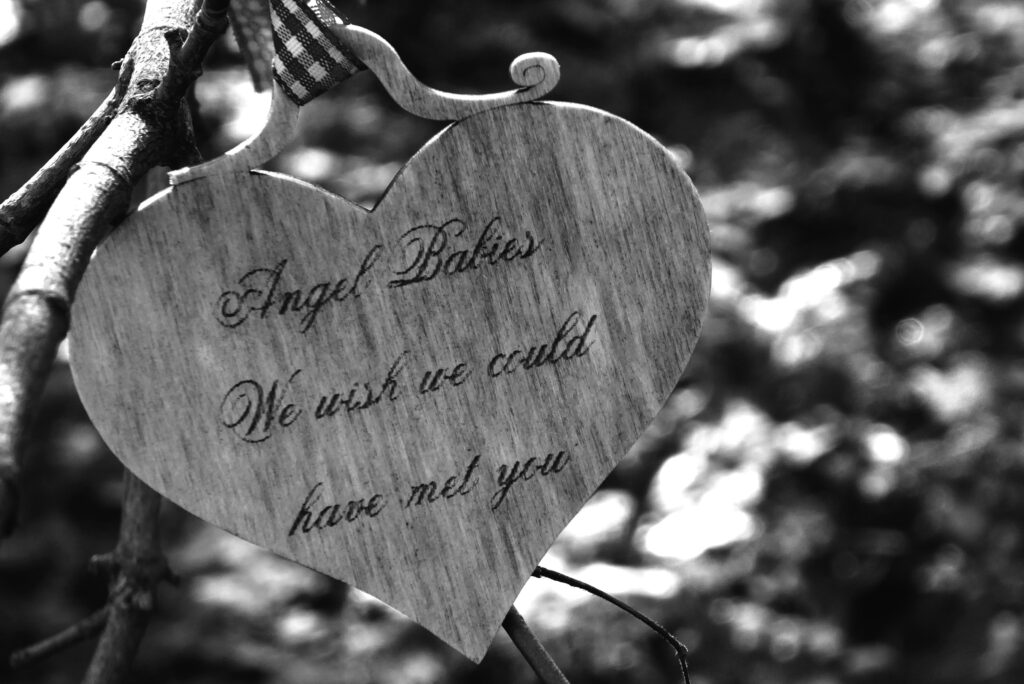
When I first visited the memorial at The Angel, a wooden baby bootee hung from the branch of a tree that was situated in the centre of the copse. The bootee had been painted but the decoration had largely weathered away, except for a residue of pink remaining on the toe. In conversation, a colleague had remembered the memorial at The Angel some years ago as a grassroots site of remembrance for baby and child loss, and she recalled the trees being decorated with many more of these painted wooden tokens. When I saw the bootee again, I thought of my colleague’s story and considered this object to be a surviving remnant of the original memorial, which she had described so vividly to me. The wooden bootee has since disappeared, but I recall it whenever I pass the tree from which it hung.
Even though the wooden bootee has gone, baby loss is still commemorated at the memorial site. The symbolism of The Angel resonates with the imagery that surrounds baby loss: the term ‘angel babies’ is used to describe babies who have died at or before birth, or in their first year of life. A number of tokens at the memorial site refer specifically to ‘angel babies’, their wording resonating powerfully with the nearby figure of The Angel.

In her alphabetical dictionary of baby loss, Monica J. Caspers writes an entry for ‘angel babies’, writing of this popular term of remembrance:
Influenced by religious iconography, angel babies are believed to inhabit both heaven and earth. Their ‘presence’ brings peace and comfort to those left behind to mourn them, especially parents. Many baby lost parents, particularly mothers, report that when asked how many children they have, they list their living children and angel babies. Some bereaved women share stories of communicating with their angel babies through dreams and conversations. (p. 10)
Given the prevalence of angels in memorial tokens relating to baby loss, as well as in the bereavement support literature for grieving parents, The Angel becomes vibrant with meaning as a site of remembrance in this context. The copse of trees, situated between the motorway and The Angel, is itself expressive of a place between the worldly and the spiritual realms. The Angel both amplifies the angel symbolism, and represents a guardian presence for those babies and infants who are commemorated there.
Linda L. Layne has written of the ways in which it is still socially unclear how to mourn pregnancy and baby loss, which can be at once the loss of a baby and of parenthood. Layne observes that ‘baby things’ take on a particular significance as memorial objects; in the face of continuing social denial of the loss, these objects ‘make the claim that a “real” child existed and is worthy of memory’ (p. 324). Layne notes that parents often give gifts to the baby after death that the child would have received had it been living – clothing, toys, and balloons are especially popular. On my last visit to The Angel, a pair of cloth bootees had been tied to a tree branch in the copse, together with toys and a birthday balloon, representing at once a tender gift to a lost baby and a moving memorial.
I have already considered the specific symbolism of The Angel in the context of baby loss. Layne also opens up the significance of the trees from which the tokens are suspended at the memorial site. Trees are, in Layne’s words, ‘alive and capable of growth’ (p. 337), and the adoption of a tree by parents is itself a form of living memorial. Trees can form the centre of commemorative rituals and be decorated with lights or objects to mark anniversaries and birthdays. A token left in a tree at The Angel is placed in the sculpture’s protective embrace, and the memorial site thereby continues to hold poignant and powerful significance in the context of pregnancy loss, and of baby and child bereavement.
References
Monica J. Caspers, Babylost: Racism, Survival, and the Quiet Politics of Infant Mortality, from A-Z (New Brunswick: Rutgers University Press, 2022).
Linda L. Layne, ‘”He was a real baby with baby things”: A material culture analysis of personhood, parenthood and pregnancy loss’, Journal of Material Culture 5.3 (2000), pp. 251-367.
